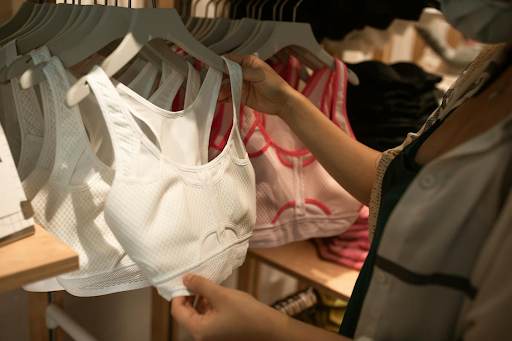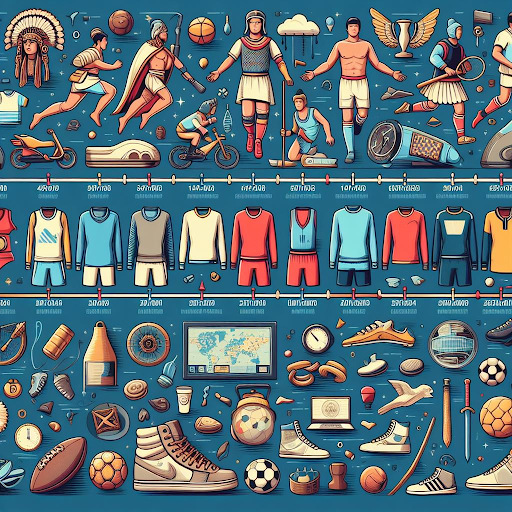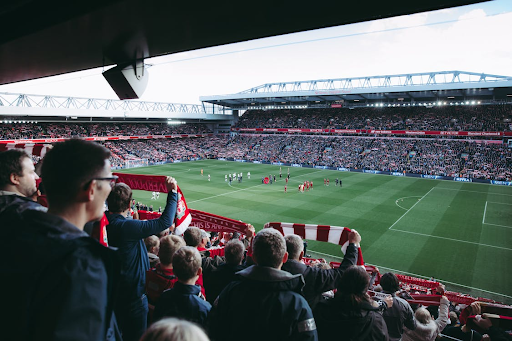
|
The development of apparel in sports is an interesting journey into how fashion and technology have influenced even fan cultures. From the nostalgic old-school jerseys to the cutting-edge and technologically advanced clothing worn by fans today, the change is truly amazing.
| “As athletes become fashion icons, sports apparel evolves from mere uniforms to coveted pieces of streetwear.” |
Before we take a closer look at the rises and falls within this evolution and how each phase influenced support, let us take a closer look at the different phases of it.
The Origins of Sports Apparel
From the early beginnings of organised sports, where team uniforms were simple and functional, providing a means of differentiating one team from another, the pursuit of sartorial supremacy has become an intrinsic part of elite sports culture.
The material used for the uniforms was not made from light fabrics such as silk, implying that they were reasonably heavy and this limited breathability and comfort. But they created their own history for the jerseys we know them to be today.
The Rise of Throwback Jerseys
The culture of sports saw a wave of nostalgia in the 1970s and 1980s that gave rise to the phenomenon of vintage jerseys, i.e., such clothes were made from materials of previous decades.
Fans adopted these throwback Chicago Cubs jerseys and Chicago Cubs Hats as a form of keeping the history of their favorite teams alive, and for celebrating some of the greatest players to ever play the game.
The popularity of throwback jerseys skyrocketed and many teams and companies took advantage of this by issuing an array of limited edition replicas of past uniforms.
The Influence of Athlete Endorsements
In the late 1900s, athletic endorsements came to ascendancy, and sports garments became additional than uniformed – they turned into a style assertion.
In turn, as athletes adopted celeb status off the field and became style icons, fans wished to copy what they perceive to be their favorite players’ brand and designs.
This change created partnerships between athletes and sport apparel brands with unique signature lines and exclusive collections that blurred the designations between athletic clothing and fashion streetwear.

|
The Era of Performance Fabrics
There have been tremendous changes in sports apparel as new trends in textile technology were introduced making it lighter, harder, and comfortable with elasticity or stretchable material products.
Other than performance fabrics like moisture-wicking polyester and breathable mesh have now been the norm in sports uniforms which has improved performance and comfort factors of the athletes during gameplay.
These innovations have also found their way to fan gear including the distribution of high performance merchandise on behalf of apparel brands that supporters can wear both when watching a game and while outside it.
The Digital Age of Fan Engagement
Social media and online communities have made it easier for fans to engage with a team online, making the digital interactions the most important and engaging parts of fandom.
In this terrain, sports apparel is an essential component which represents loyalty and affiliation to a given fanbase and the team they support.
Personalised custom jerseys with unique names and numbers, limited edition drops and exclusives collaborations; modern fans have the selection of ways to present their exclusive identity through their clothing.
|
“Did you know?”
The first sports uniforms were often made from heavy fabrics like wool and cotton, offering minimal comfort compared to today's high-performance materials. |
The Future of Sports Apparel
Technology keeps improving, and so are the needs of the consumers. With all these in mind, the future of sports apparel appears to be quite bright and hopeful. We will continue to witness a closer relationship between smart fabrics and wearable technology marketing trends.
This will ensure that athletes and fans get new innovative solutions for performance or style. Further, the concept of sustainability in fashion is going to impact sports apparel where brands are looking for eco-friendly materials and production methods that will help in reducing their carbon footprint.
The Role of Branding and Marketing
Hand in hand with technical developments, they do not omit branding and marketing to the evolution of sports clothes.
The high amount of money poured into marketing campaigns by companies involved in sportswear is meant to generate hype when making new product releases and collaborations.
These efforts, such as endorsements by athletes and high-profile sponsorships not only lead to sales but also create community spirit among fans.
Brand loyalty is what provides the core motivation for consumers to buy products from a particular brand, wherein, fans are proud to parade a conspicuous logo of their favorite brands like badges of honor.

|
The Impact of Globalization
Branded apparel in the sports clothing industry is also a global phenomenon as brands are actively eyeing the market beyond their home country. With the expansion of the sports world without boundaries, therefore, the need for team merchandise and fan gear is seen not only on one territory but all over the world.
This globalisation has resulted in a wide range of designs and styles that are manifested in the artwork to suit fans from different cultures and backgrounds.
Protective sports apparel varies by each continent, from soccer jerseys in Europe to basketball jerseys in Asia and more. Each fan wears his or her available apparel that reflects the unique identity and passion of fans all over the world.
The Influence of Pop Culture
Pop culture has also contributed to influencing trends in sports apparel together with the sporting culture. Sports brands and entertainment stars also create cross-over collaborations due to the trend-setters of celebrities and influencers.
From music artists to actors, celebrities help promote sports apparel by lending them their star power, bringing a load of hype and actively contributing to increased sales.
This fusion of sports and entertainment has resulted in a revival of fandom with a streetwear bent that has been popularly embraced by designers.
The Rise of Customization and Personalization
The trend towards customization and personalization is no longer as highly ephemeral as it has become a past fad with the advent of e-commerce and on-demand manufacturing in sports apparel.
They can customise their jerseys by picking their own colours, fonts, logos and patches. Personalization is on this level of customization, which enables the fans to have something individual and unique that would be theirs only.
Customizable to include the player’s name and number, or custom messages and graphics, customization options are limitless in terms of suitability for varying fans.
The Importance of Fan Experience
Current sports environment demands customer orientation more and invests into improving fan experience not only inside but also outside the stadium venues.
Sports apparel in turn, is such an important part of this connection as it is a physical tie between the fan and favorite team.
Sports clothing offers many great opportunities for game-day excitement, whether it’s wearing team colors or wearing similar jerseys with friends and family.
Merchandise shelves and online outlets have the whole range of merchandise products from traditional jerseys and caps through novelty items and accessories for all fans following different ages and backgrounds.

|
The Evolution of Retail Channels
Customer behaviour has also changed across the sports value chain, particularly in the case of buying apparel, where e-commerce and direct-to-consumer brands have come in to disrupt traditional retail.
Although online based, these platforms are convenient and easily accessible hence they give fans a chance to shop their favorite team apparel from anywhere and at any time.
Besides, complemented by pop-up shops and experiential retail outlets that offer fully immersive shopping experiences including the use of interactive displays and unique merchandise.
With the retail industry moving towards newer horizons, sports apparel brands are devising creative methods to involve fans and provide memorable shopping experiences.
The Role of Sustainability
In the course of the past few years, sustainability has come out as a major issue undertaken into consideration in the fashion industry and also sports uniforms.
Brands are also becoming more responsible toward the environment, with many organisations seeking ways of using sustainable materials and cutting down on wastes as well as carbon emissions.
Efforts to promote sustainability show up in all areas of marketing ranging from recycled polyester jerseys to eco-friendly packages. This is primarily an effect of concerns of a growing number of fans; who try to make their purchases eco-friendly.
The Power of Fan Engagement
In the long run, the history of sports apparels is a manifestation of the deference to fan engagement and community development. Either the nostalgic throwback jerseys, sport apparel serves as the identity of sports and the symbol of fandom.
Fueled by the passion of fans to accept new trends and technologies, it is easy to see that the future for sports apparel is vibrant and full of fresh opportunities defined by greater innovation and creative development.
Therefore, the next time you are giddy up to cheer for your favorite team, bear in mind the story leading us here- and be proud of your colors.
Finally, the journey of sports apparel from throwback jerseys to the present fan gear is an illustration of how sports fans continue to keep their love for sport alive as well as being creative in their personal choice and designs.
As we continue to embrace new technologies and trends, one thing remains constant: Our passion for the game and the essence that reflects it.
And the next time that you are ready to cheer for your team, remember the road travel that led us from throwbacks to tech-savvy fan gear—by all means rock it in joy!







